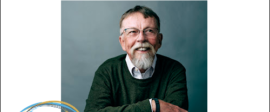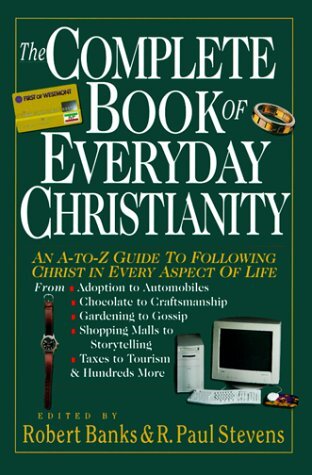Euthanasia
Book / Produced by partner of TOW
Euthanasia, which literally means “good death,” is the intentional and voluntary taking of a patient’s life either by omitting necessary medical treatments or by taking direct action such as an overdose of drugs. The omission of life-saving treatments intending to kill is to be distinguished from withdrawing or forgoing medical treatments when such interventions are clinically determined to be futile. The latter is not euthanasia and is generally accepted as permissible, possibly even desirable under circumstances in which continuing such treatments amounts to artificially prolonging the dying process through medical technology. The omission of an otherwise life-saving treatment, however, in order to end a life deemed not worth living (for example, surgical relief of intestinal atresia in a Down-syndrome baby) is euthanasia. This is also an example of involuntary euthanasia, since the request is made by someone other than the infant patient, as opposed to voluntary euthanasia, which is requested by the patient. Whether voluntary or involuntary, euthanasia implies the assistance and/or participation of another person, usually medical personnel, for its consummation.
Arguments Supporting Euthanasia
One of the main arguments advanced to support euthanasia appears to arise from a misconception that terminally ill patients (for example, those suffering from cancer) usually die a painful and technologically prolonged death. Euthanasia in this sense is seen as a form of mercy killing. But this concern is well addressed by the established right of patients or their surrogates to refuse such medical treatment. As for excessive pain, there are very effective drugs for just about all conceived illnesses. Underutilization of drugs is the main reason for failure to control pain and suffering. With more attention to pain management, together with supportive care of patients’ emotional needs, almost all terminally ill patients should be able to function at a manageable level and to die relatively free of suffering. Unbearable pain and suffering are not a sufficient argument for euthanasia.
Another major argument in support of euthanasia is the autonomy of the patient: each person has intrinsic rights and freedoms to control his or her own destiny, including the timing and the manner of death. There are several problems with this. First, since euthanasia requires the assistance of another person, it is not an autonomous and private act, but a public action. Even if self-determination includes decisions of one’s own death, it does not follow that it includes the right to require someone else to kill. Second, there is always doubt as to whether the patients are in fact making an autonomous decision when they request euthanasia. Most dying patients experience mental anguish through the loss of human relationships and loss of control. They have feelings of helplessness and fear death. Such psychological factors lead one to question the rationality of a patient’s request for euthanasia.
Studies of suicide suggest that there is a correlation between suicide and emotional instability or disorders. Pleas of the terminally ill to be put to death may be anguished pleas for help and love rather than genuinely rational and auto-nomous choices. Medical personnel often fail to recognize despair and depression in the terminally ill, sometimes because of their own fears about aging, sickness and death. Requests from competent terminally ill patients cannot always be assumed to be rational and therefore autonomous. Furthermore, individual autonomy must always be balanced with and, if necessary, limited by communal goals and values. Individual desires, no matter how justifiable, must not be satisfied at the expense of societal interests. Unfortunately, our culture favors individual rights against the common good.
One of the possible negative social consequences of legalizing euthanasia is the fear that it will gradually lose its voluntary character. This means that patients may be euthanized without their consent or that they may be subtly manipulated and pressured to choose euthanasia to spare the family financial and emotional strain and society’s limited resources. Groups of patients, particularly among the disadvantaged or minorities, are particularly vulnerable. Another fear is that, once legalized, euthanasia may be extended to incurable but not terminally ill patients, such as those with senile dementia or Alzheimer’s disease. This “slippery slope” effect may then be extended to infants born with mental retardation and/or severe physical abnormalities, such as Down syndrome and spina bifida, all in the name of sparing the infant an intolerable and undignified existence. The possibility of infanticide as a social reality must be kept in mind whenever euthanasia is being seriously considered.
The Physician’s Perspective
The trust and respect that are foundational in the patient-physician relationship are seriously compromised by any physician participation in euthanasia. The public has become confident that a doctor will do everything in his or her power to help and would never consciously do anything injurious. When patients realize that their doctors are prepared to either heal them or kill them at their request, the medical profession will never again be worthy of full trust and respect as healer, comforter and protector of life in all its frailty. In our time both society in general and the medical profession have betrayed an unwillingness to accept suffering and death as part of life and have believed that they need to control both.
Insisting on prolonging life with modern technology and, failing that, consenting to patients’ requests to foreclose on life through euthanasia are expressions of the sterile spirit of our society. What we need is a genuine spirit of candor, compassion and care in the physician-patient relationship. Euthanasia would become superfluous if the fear and anxiety of a terminally ill patient were relieved by the assurance of a caring and compassionate physician who is prepared to acknowledge the limits of medical technology and is committed to help patients face death with dignity and humility. There is ample evidence to show that well-cared-for terminally ill patients have no desire to hasten their own death. They die a good death, naturally and with comfort and dignity.
Christian Response
Christians understand each human being as created out of the boundless love of God in his image (Genesis 1:27). Thus each person has a God-given source of value and dignity beyond any mere physical well-being and social utility. Life is the fundamental and irreplaceable condition for the experience of all human values, and we have an obligation to nurture, respect and promote the integrity of life, rather than harm or destroy it. Not only is our life given by God, but it is God’s property and not our own: “The earth is the Lord’s, and everything in it” (Psalm 24:1). This means that God has sovereignty over life and death. To choose death is to illegitimately assume authority in an area that has not been assigned to our control.
Further, our existence rests entirely on the Father’s loving decision to provide and to care; we are created to be dependent creatures. Much of the euthanasia movement is rooted in the modern idea of autonomy and independence. The right to die represents an escape from helplessness and dependencies on others. But the doctrine of creation establishes the link between our creatureliness and dependence as appropriately human. Dependency in time of serious illness and dying should not be repellent to the Christian. To accept one’s dependency is not to suffer indignity if care from others is accepted in humility and gratitude as a gift from God. As John Paul II says, “The Christian who thus accepts his own death and, recognizing his own condition as a creature . . . and confidently surrenders himself into the merciful hands of the Father, . . . reaches the height of his own human and Christian identity and achieves his ultimate destiny” (p. 106).
We also believe that God has invited us into a new covenant community of faith, hope and love established by the coming of Jesus Christ. Faithfulness to the covenant is established when we love our neighbor as we love God. Within this covenantal framework of human relationships, decisions and actions relating to life as well as death ought to be made. So we need to pay attention on the communal context of the bonds that exist between patients, family, health-care providers and the community at large. Moral evaluation of human activity should always include concern for the good in the social dimension. Critics of the slippery-slope arguments against euthanasia contend that each act must be judged right or wrong primarily in itself, thus betraying their lack of perception of the interdependent connections between society and individual acts. In opposing euthanasia, Christians are living out the Pauline image of the community as the body of Christ (1 Cor. 12), in helping to convert society “from an aggregate of individuals pursuing their self-interests to an interdependent covenantal community” (Gula, p. 25).
As members of a Christian community, we have an obligation to care for the sick and the dying. To receive care and hospitality is a privilege. In the process of giving care, providers, family and friends will be able not only to face their own death but to receive and participate in the final event of the patient’s life. It is this spirit of giving in love and receiving in humility that renders euthanasia pointless. Euthanasia threatens the trust and solidarity that must prevail between us if we claim to belong to a community with a Christian character. Killing is incompatible with the character of Christians. Persistent opposition to euthanasia is rooted in our living as a redeemed community of compassion, trust and care that sustains life and reflects the true character of the triune God.
» See also: Death
» See also: Healing
» See also: Sickness
References and Resources
R. Gula, “ The Virtuous Response to Euthanasia,” Health Progress 70, no. 10 (December 1989) 24-27; Pope John Paul II, “To Recover the Meaning of Life,” The Pope Speaks 35, no. 2 (1990) 102-7; R. N. Wennberg, Terminal Choices (Grand Rapids: Eerdmans, 1989).
—Edwin Hui





